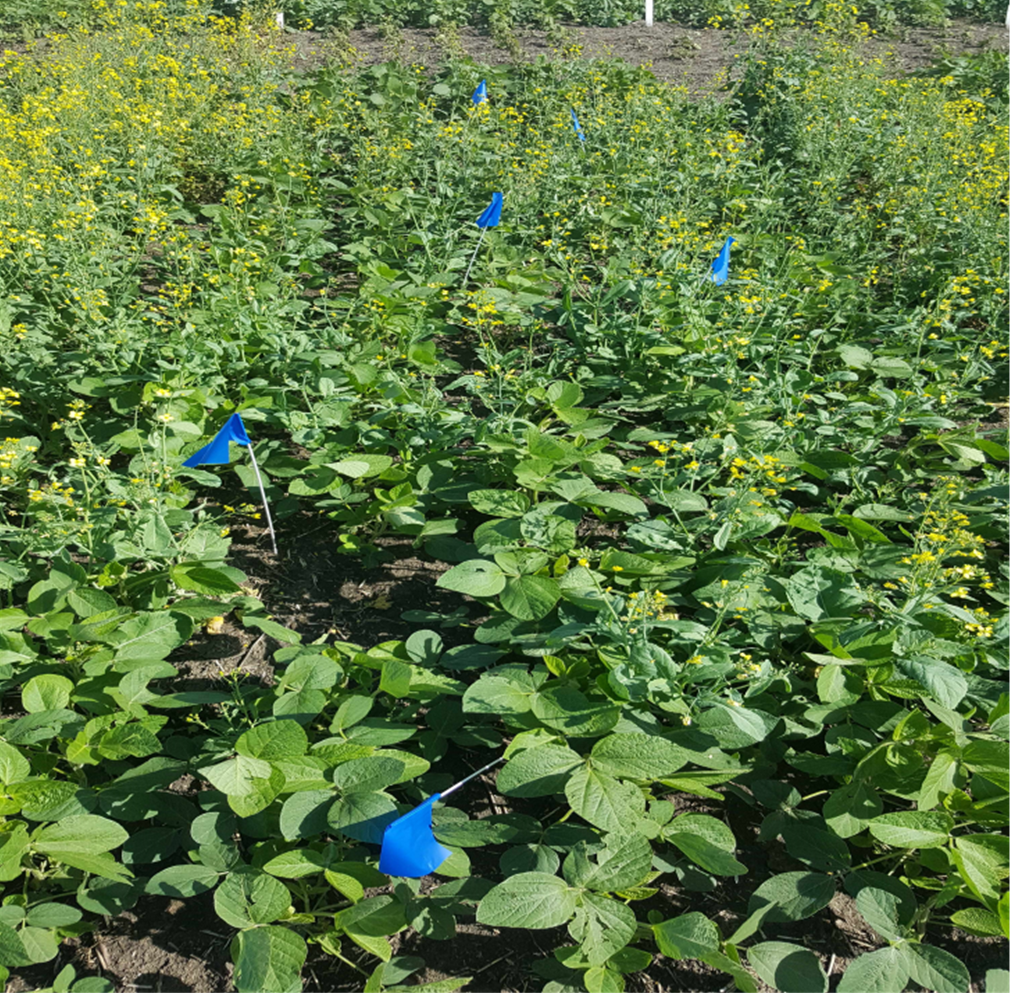Research Objective
To determine the effectiveness of seeding date and seeding rate in managing glyphosate resistant canola volunteers in glyphosate resistant soybean crops; to provide herbicide options for soybean growers to manage glyphosate resistant canola volunteers in glyphosate resistant soybean crops.
The seeded area of soybeans has been steadily increasing in Western Canada. In 2015 there were approximately 2.19 million hectares of soybeans seeded in Canada, with over 109,000 hectares seeded in Saskatchewan. The majority of the soybean acreage is glyphosate resistant (GR)͕ therefore, one of the biggest weed control challenges for soybean growers is volunteer GR canola, which accounts for close to 50% of the canola grown annually in Western Canada. Limited information exists for the cultural and chemical control of volunteer GR canola in GR soybean. To address this issue, four separate experiments were conducted at four locations (Saskatoon, Scott, Indian Head, SK͕ Carman, MB) in 2014 and 2015. Experiments included a soybean seeding date by seeding rate experiment to determine optimum seeding dates and rates for reducing volunteer canola interference͕ evaluation of various PREherbicides͕ evaluation of various POST- herbicides͕ and evaluation of sequential PRE- and POSTherbicide treatments for volunteer canola control.
Response to seeding date was variable and was environment dependent͕ however, increasing seeding rates generally resulted in reduced canola interference and higher soybean yield. Based on an economic analysis, the optimal seeding rate was 40 plants m-2 in years with low or average market prices and 50-60 plants m-2 with high market prices. PREapplications containing cloransulam-methyl (First Rate®) and florasulam were the most consistent in controlling volunteer RR canola and increasing soybean biomass and yield. Most of the POST- herbicides evaluated (Basagran®, First Rate®, Odyssey®, Reflex®, Solo®, and Viper ADV®) provided acceptable control of volunteer canola and resulted in increases in soybean biomass and yield. Sequential treatments containing tribenuron PRE- and imazamox + bentazon POST- were generally ranked highest in terms of volunteer canola control and low soybean phytotoxicity. Sequential treatments containing thifensulfuron POST were generally ranked lowest due to high phytotoxicity (partially due to error in application rate) and low efficacy. Treatments containing saflufenacil PRE- and cloransulam-methyl, fomesafen, or bentazon POST also resulted in satisfactory volunteer canola control and crop safety.
